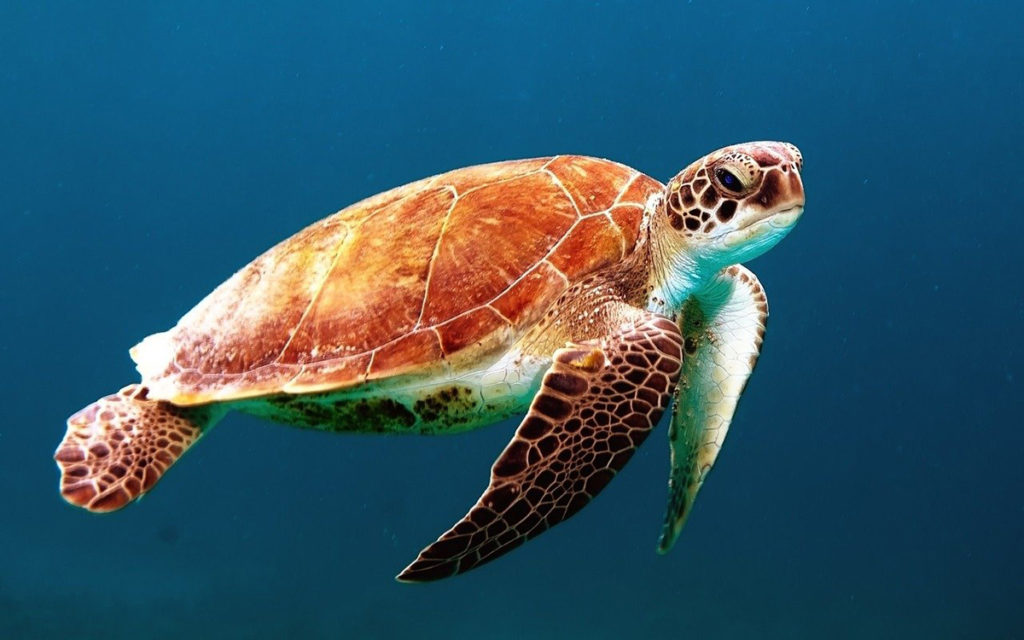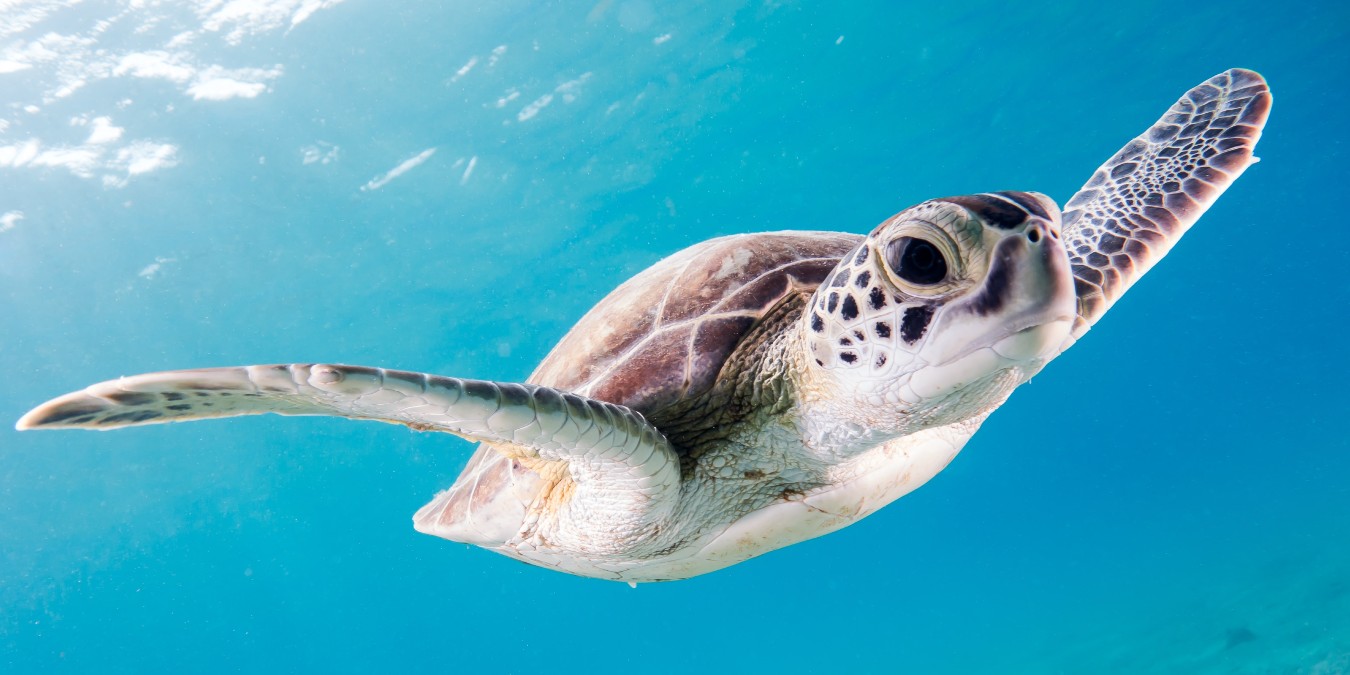Turtles are often seen as tropical species, enjoying the warmer climates around the equator, so what to turtles do in the winter? To answer this question, we first need to understand the difference between turtles, terrapins and tortoises. Only then can we discover what turtles do in winter.
Hibernation vs Brumation
When it comes to reptiles, hibernation is referred to as brumation and there are subtle differences between the two states. While hibernating animals enter a true sleep, brumating reptiles do not and may wake occasionally.
Brumating animals may not use their fat reserves as they can forage for food during periods of waking. They will also continue to drink water, unlike true hibernation.
Brumating reptiles are tolerant to reduced oxygen levels, whereas hibernating animals are not. A hibernating animal will remain in a deep sleep throughout their hibernation period, whereas brumating reptiles can wake several times, especially on sunnier or milder days.
Reptiles will usually brumate from late fall through until early spring, however, this can be shorter if the winter is mild or longer if conditions are harsh.
Fun Fact: Russian tortoises live in such harsh environments that they may be active for as little as 3 months of the year!
Turtles, Terrapins and Tortoises
These three species have similar appearances and are often confused with one another. However, once you really look at them, there are quite a few differences both in appearance and behaviour. To find out what turtles do in winter, we first need to learn what the differences are.
All three have a hard shell of bone and cartilage. They also have similar shaped heads and eyes. The differences lie in their limbs, their diet and their behaviour.

Turtles – Appearance and Diet
Despite being occasionally spotted on land, turtles are aquatic reptiles, typically found in marine waters. Females only come onto dry land to lay eggs. Male turtles seldom, if ever, leave the water. Hunting, courtship and mating all occur in water.
The shell of a turtle is flattened and smooth compared to terrapins and tortoises. This flattened shape is more streamlined and creates less drag in the water.
Turtles have flippers instead of feet and these flippers are what make them such good swimmers. The front flippers are larger and they work like boat oars, creating friction and propulsion through the water. The hind flippers are short and rounded, used more for directional movement.
All turtles need oxygen and will swim to the surface to breathe. Smaller species take a breath every 10-15 minutes, but larger turtle species can go as long as an hour without surfacing.
What do turtles eat? Turtle species vary in their diet. Some turtles are exclusively herbivorous, feeding on aquatic plants like seaweed, whereas other turtle species may also eat fish and small crustaceans like shrimp and crab.

Terrapins – Appearance and Diet
Terrapins are semi-aquatic reptiles inhabiting freshwater environments. They are somewhere between a marine turtle and a terrestrial tortoise. Terrapins also have slightly flattened shells to reduce drag during swimming. However, as opposed to turtles, terrapins have short legs and clawed toes instead of flippers.
Their legs and sharp claws allow them to move easily on land and give them better stability when entering and leaving the water. Terrapins can often be seen basking on rocks or logs during the day.
Terrapins are usually small and highly aggressive. It is not recommended that you try to handle one as their bite is strong enough to remove a finger! What do terrapins eat? They are omnivorous, hunting for small fish, molluscs, crustaceans and aquatic insects, as well as aquatic plants and algae.
Also Read: What Do Moose Eat?
Tortoises – Appearance and Diet
Tortoises are terrestrial (land based) reptiles, with high domed shells, sturdy legs and clawed feet. They may utilise shallow water to cool down in warm weather, but they do not swim.
Most tortoises are found in warm climates due to them being ectotherms (cold blooded). They rely on the environment to regulate their body temperature.
What do tortoises eat? Tortoises are mostly herbivorous, but they will occasionally eat meat if food is scarce. Their diet is typically leaves, plant bulbs, grasses and fruits.
Tortoises can grow to incredible sizes, with Aldabra, Galapagos and Indian tortoises being the largest. Some species can weigh more than 400kg and grow longer than a metre. They are also very longed lived, often living for 150 years or more!

What Do Turtles Do in Winter?
So, now we know the difference between turtles, terrapins and turtles, what do they do in winter when the weather is cold and food is scarce?
Marine turtles do not hibernate in winter, but they use a mild version called torpor. During torpor, a turtle’s metabolic responses and heart rate slow by as much as 90%. This allows them to go for extended periods without food, but they remain in a conscious but less active state.
Turtles would normally need to surface to breathe air, but during torpor, they can absorb oxygen from the water via blood vessels in their skin, mouth and exposed rear. Turtles near the equator will not use torpor as the temperatures remain warm even in the winter. However, those living around the coasts of North America will use torpor from late fall through to early spring.
What Do Terrapins Do in winter?
Terrapins also use torpor during the cold winter months. If you have pet terrapins, you will notice that they become much slower, feed less and spend most of their time in damp, dark places. Terrapins found in regions with cold winters will hibernate fully (referred to as brumation for reptiles), using rocky crevices with damp moss to protect themselves.
Many terrapin owners will simulate a winter period and allow their terrapins to hibernate in nesting boxes, which are usually filled with a layer of damp moss and regularly sprayed to maintain the moisture levels.
Terrapins can hibernate anywhere between 1 and 3 months, with longer periods occurring when the weather is colder for longer.
What Do Tortoises Do in winter?
Tortoises are well known to hibernate during the winter months. Most tortoise owners will prepare their pets ahead of time by reducing their food intake and preparing a hibernation box.
Like turtles and terrapins, species living at or south of the equator will not hibernate during the winter, as the environment is fairly stable. Only species in the northern hemisphere will need to hibernate. They will choose a burrow, hollow log or rocky crevices to spend the winter.
Unlike most mammals, tortoises may wake from hibernation (or brumation) if a particular day is warmer or sunnier. They may spend a few hours relieving themselves and finding food before returning to their burrow.
Tortoises may alter which vegetation or fruits they eat in the month before hibernation begins. This allows them to increase their fat reserves, helping them to survive through until spring.
You May Also be Interested in Reading: What Do Seals Eat?

